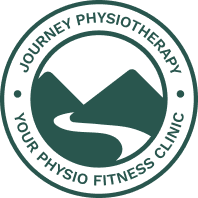Summer squash training – get strong and get fast.
To become a great squash player at any level you need to play lots of squash – this is a given. We also know by training different systems we can become more mentally and physically resilient. Building a base of strength and a strong cardiovascular system is a great way to improve speed, increase physical resilience and lessen burnout from too much squash. I discussed ways in which to become a resilient squash player in a previous post, in this blog I highlight six areas to keep top of mind when creating an off season summer plan for strength, speed, and cardiovascular fitness. Like any list of exercises there are alternatives and each athlete will have unique needs. The six areas I would include in a comprehensive summer plan are as follows:
Base strength
Uni-lateral strength
Upperbody
Hot spot training
Plyometrics
Anaerobic or aerobic cross training
Base strength
This includes your big basic lifts: a front squat, deadlift, or back squat. Each of these big patterns challenge many different muscle groups, accomplishing a lot in a short period of time. If you are new to lifting, you lighter weights and more reps are recommended to learn the skill and allow your body to adapt slowly.
https://youtu.be/1DrZOauX14s
Uni-lateral strength
Squash will typically put more stress on one side of the body. The off-season is an opportunity to create balance. Asymmetries can be natural and do have advantages but that if we can address and equalize strength from L to R it will help improve your lifting capacity. This includes a split squat, step up or my favourite, a single leg deadlift.
https://youtu.be/EfJC0_0GGM8
Upper-body
There are four crude patterns of the upper-body: a push, a pull, a press, and a rotation. By addressing each movement you create a strong and robust shoulder, trunk, and arm. This video offers up a few ideas. If you are tight for time. Pick one and get it done:)
https://youtu.be/yu4Kg-rK9TQ
Hot spot training
The idea behind hot spot training is to identify the sports high load areas and your own previous injuries. If you hurt a shoulder or knee in the past you you train that area a bit more. Squash is typically hard on the achilles, the knee, low back, and shoulder. By doing your base lifts, uni-lateral, and upper-body exercise you will target some of the hot spot areas. A simple calf raise or a groin related exercise might be nice additions as well. Hot spot training will have greater variability as prior injures will vary from athlete to athlete.
https://youtu.be/ZHOeGRhXECU
Plyometrics for explosive power
Not an easy set of exercises to “jump” into but the benefits of sticking with a jumping program will pay off in speed gains (especially as we age and lose fast twitch fibres) and when done gradually will protect the tendons of the lower body.
https://youtu.be/_YKopaI9Z0E
Anaerobic or aerobic training
Both short burst training (anaerobic), to replicate the demands of squash and longer form slow training (aerobic), are beneficial to your game. Depending on your goals you may chose to do more aerobic or anaerobic. Aerobic training improves your cardiovascular system, lessens in-competition fatigue, improves recovery, and aids in weight management. Anaerobic training more closely resembles the energy system used in squash so it is vital to train in this zone to improve your on-court fitness and ability to go deeper into games. Anaerobic training can include on-court sprints, ghosting, drills, hill sprints, touch rugby, bike sprints…the list goes on:)
https://youtu.be/3r-ZxHxL4PU
As I have tried to stress, these are principles to follow but in the end each athlete will have a unique set of needs and goals. Start training and see how one or all of these principles fit into your plan. Thanks for reading.
Dave
